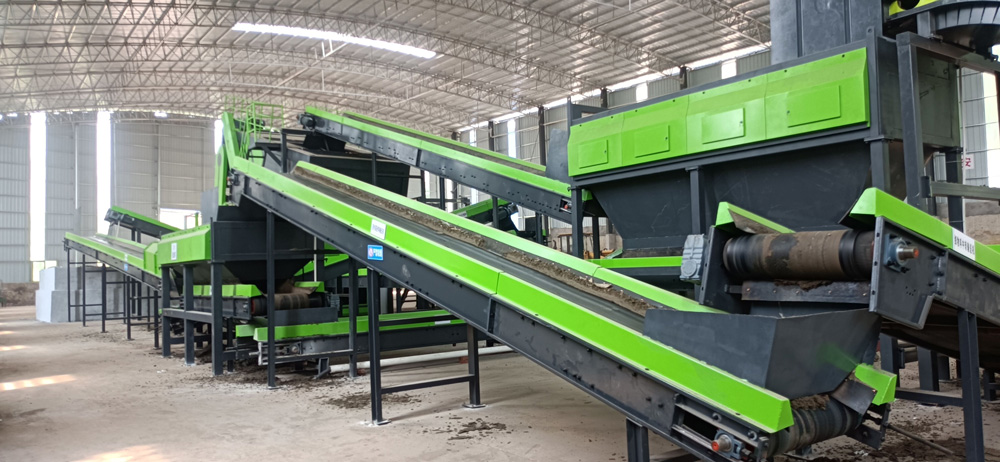 Time:2025-03-17
Time:2025-03-17
 Source:青绿环境
Source:青绿环境
With the acceleration of the industrialization process, the generation of industrial solid waste (referred to as “industrial solid waste” hereafter) has been increasing year by year, posing a significant challenge to environmental protection. How to efficiently and environmentally handle industrial solid waste has become an urgent issue to be addressed. The application of advanced waste sorting equipment is an important means to improve the efficiency and effectiveness of industrial solid waste treatment.

Firstly, waste sorting equipment can effectively classify industrial solid waste. The types of waste generated in industrial production processes are diverse, including recyclables such as metals, plastics, and paper, as well as hazardous substances and other non-recyclables. Through automated sorting equipment, waste can be quickly and accurately classified based on the different properties of materials, such as density, magnetism, and optical characteristics. For example, magnetic separators can be used to separate iron-containing metal waste, while optical sorting machines can precisely identify and separate different types of plastic products based on color and material differences.
Secondly, proper classification facilitates the recycling and reuse of resources. Valuable recyclables, such as non-ferrous metals like copper and aluminum, as well as some rare metals, can be reintroduced into the production process after sorting. This not only reduces the demand for raw materials but also lowers production costs. At the same time, hazardous waste can be separated and treated specifically to prevent environmental pollution.
Moreover, the use of waste sorting equipment can improve treatment efficiency and reduce errors and health risks associated with manual operations. Traditional manual sorting methods are inefficient and difficult to ensure quality. In contrast, modern sorting equipment can handle large amounts of solid waste in a short time while maintaining high accuracy. Additionally, highly automated sorting systems can meet the needs of enterprises of different scales, from small factories to large industrial parks, with suitable solutions available for all.
In summary, when facing the increasingly severe problem of industrial solid waste treatment, the adoption of efficient waste sorting equipment is an effective strategy. It not only helps us better manage industrial waste and promote the sustainable use of resources but also contributes to the development of a greener and more environmentally friendly industrial model. In the future, with the advancement of technology, it is believed that more innovative sorting technologies and equipment will emerge, further driving the development of industrial solid waste treatment to a higher level.













 Prev
Prev











